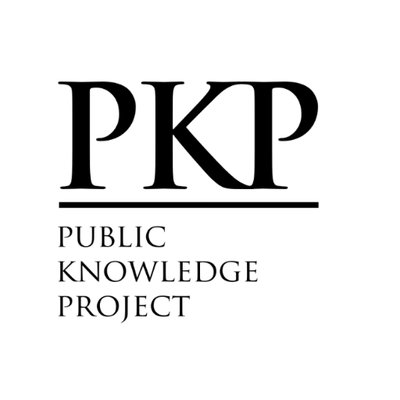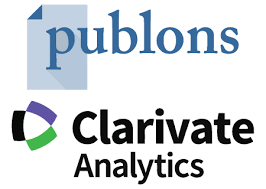The determinants of inflation in the CEMAC zone
the role of informel finance
DOI:
https://doi.org/10.59051/joaf.v14i1.632Keywords:
Keywords : inflation, informal finance, fiduciary money, interest rate spread, ECMCA.Abstract
Purpose : The purpose of this paper is to identify the determinants of inflation in the countries of the Central African Monetary Union (CEMAC) by focusing on the role of informal finance.
Methodology : We use dynamic panel modeling with the PMG estimator over the period 2000-2020.
Result : We find that informal finance has an influence on inflation in the long run and not in the short run in all countries of the union. It is important to consider such a sector to decide on the advisability of integrating it into the strategies of the BEAC to maintain price stability in the ECMCA.
Originality of the article : The originality of the article lies in the proposal of an indicator that allows to measure the liquidity of the informal sector and to verify its effects on inflation in the member countries of a monetary union composed of developing countries such as the ECMCA.
Downloads
References
Akpo, P E J, (1999), « Finance informelle et politique monétaire, chapitre 11 », Finance Informelle et financement du développement, Université Francophone.
Andersson, Fredrik NG (2011), « Monetary Policy, Asset Price Inflation and Consumer Price Inflation », Economics Bulletin, Vol. 31 no.1 pp. 759-770.
Assenmacher-Wesche, K. et Gerlach, S, (2006), « Interpreting Euro Area Inflation at High and Low Frequencies » : BIS Working Paper N°195, BIS.
Barnichon, R. et Peiris, S, (2007), « Sources of inflation in sub-Saharian Africa » : Journal of African Economies.
Bikai, J, Batoumen, H, Fossouo, L, (2016), « Déterminants de l’inflation dans la CEMAC : le rôle de la monnaie », BEAC Working Paper Novembre 2016.
Blanchard, O. et D. Cohen (2013), « Macroéconomie », 6ième Edition, Pearson.
Borio, C. E. V, and A. Filardo, (2007), « Globalisation and inflation: New cross-country evidenceon the global determinants of domestic inflation ». BIS Working Papers 227, Bank for International Settlements.
Caceres, C., Poplawski-Ribeiro, M.andTartari, D. (2013), « Inflation Dynamics in the CEMAC Region » : Journal of African Economies, 22 (2), p. pp. 239–275.
Calvo, G. A, (1983), « Staggered Contracts in a Utility-Maximizing Framework », Journal of Monetary Economics 12 (September), 383-398.
Cavalcanti, T.V. de V., and Villamil, A.P, (2003), « Optimal inflation tax and structural reform ».
Chaudhuri,S and Gupta, M, R, (1997), « Formal credit, corruption and the informal credit market in agriculture ; A theoretical analysis. Economica, New Series, Vol.64, No. 254 (May, 1997), 331-343.
Chockri A. and Frihka I, (2011), « La portée de la politique de ciblage d’inflation : approche analytique et empirique pour le cas tunisien », PANOECONOMICUS, 2011, PP-91-111.
Chow, G. C. et A.-L. Lin, (1971), « Best linear unbiased interpolation, distribution, and extrapolation of time series by related series ». The Review of Economics and Statistics 53(4), November, 372–375.
Comunale, M. and D. Kunovac, (2017), « Exchange rate pass-through in the euro area », Working Paper Series 2003, European Central Bank.
Conti, A. M., S. Neri, and A. Nobili (2017), « Low inflation and monetary policy in the euro area », Working Paper Series 2005, European Central Bank.
Diaw, A. et A. K. Sall, (2012), « Les déterminants de l’inflation dans les pays de l’union économique et monétaire ouest africaine (UEMOA) : une approche en données de panel », Revue Economie et Gestion, Vol. 11, No. 1-2, p. 85-110, Jan-Juin.
Friedman, M, (1968), « The Role of Monetary Policy », The American Economic Review, Vol. 58, No. 1 (Mar.), pp. 1-17.
Ftiti, Z, (2010), « The macroeconomic performance of the inflation targeting policy : anapproach base on the evolutionary co-spectral analysis », Economic Modelling, 27, 1, 468-476.
Gerdesmeier D., H-E. Reimers and B. Roffia, (2009) « Asset Price Misalignments and the Role of Money and Credit », European Central Bank Working Paper 1068.
Globan, T., V. Arcabic, and P. Soric (2016), « Inflation in New EU Member States: A Domestically or Externally Driven Phenomenon ? », Emerging Markets Finance and Trade 52(1), 154–168.
Ghosh, S and Kumar, R, (2014), « Monetary policy and informal finance: Is there a pecking order ? » Reserve Bank of India, December 2014.
Gouteron, S. and Szpiro, D, (2005), « Excès de liquidité monétaire et prix des actifs », Banque de France, note d’études et de recherche, 131.
Hossain A, (2005), « The sources and dynamics of inflation in Indonesia : an ECM model estimation for 1952-2002 », Applied Econometrics and International Development. AEID.Vol. 5-4.
Hugon, P, (1991), « Politique d'ajustement et systèmes financiers informels africains », in J. Adda et A. Assidon (éds), Dette et financement du développement, L'Harmattan, Paris, 1991, pp. 89-112.
Hua,X, Huang, Y, and Wang, X, (2010), « What determine China’s inflation », China Center for Economic Research. Working Paper Series.
Jackson, J., McIver, R.andBajada, C (2007), « Economic Principles ». 2 nd ed. Australia : McGraw-Hill Australia Pty Limited.
Kenkouo, G.-A, (2015), « Dynamique du prix du pétrole et inflation dans la CEMAC » : BEAC Working Paper N°8/2015.
Le Bihan, (2009), « 1958-2008, avatars et enjeux de la courbe de Phillips », Banque de France, Direction des Études Microéconomiques et Structurelles.
Lelart, M, (2006), « De la finance informelle à la microfinance ». AUF et Editions des Archives Contemporaines, 2006.
Levieuge, G (2005), « Politique monétaire et prix d'actifs », Revue de l'OFCE 2005/2(n°93), p. 317-355.
Levin A., Lin C-F., and Chu C-S.J (2002), « Unit root tests in Panel data:asymptotic and finite-sample property », Journal of Econometrics Vol. 108 (n°1): p. 1-24.
Lougani, P. et Swagel, P, (2001), « Sources of Inflation in Developing Countries » : IMF Working Paper N°WP 01/198.
Lucas R. E. Jr, (1972), « Expectations and the neutrality of Money », Journal of economic Theory, No.4, p.103-124.
Lucas R. E. Jr, (1976), « Econometric Policy Evaluation : A Critique », in Studies in Business Cycle Theory, p.104-130.
Madestam, A, (2009), « Informal Finance: A Theory of Moneylenders », Working Paper n. 347.
Mazhar, U. and Méon, P.-G, (2017), « Taxing the unobservable: The impact of the shadow economy on inflation and taxation ». World Development, 90:89–103.
Nicolini, J. P, (1998), « Tax evasion and the optimal inflation tax ». Journal of Development Economics, 55(1), 215–232.
Nguyen, A., Dridi, J., Unsal, F. D, and Williams, O. H. (2015), « On the Drivers of Inflation in Sub-Saharan Africa », IMF Working Paper N°WP/15/189.
Petroni P, (1999), « Critical Values for Cointegration Tests in Heterogeneous Panels with Multiple Regressors », Oxford Bulletin of Economic and Statistics Vol. 61 (n°S1): p. 653-670.
Pedroni P, (2003), « Panel cointegration. Asymptotic and .nite sample properties of pooled time series tests with an application to the PPP hypothesis », Econometric Theory.
Phelps E. S, (1968), « Money-Wage Dynamics and Labor Market Equilibrium », Journal of Political Economy, 76, 4, pp. 687-711.
Phillips A. W, (1958), « The Relation between Unemployment and the Rate of Change of MoneyWage Rates in the United Kingdom », Economica, 25, pp. 283-299.
Ramayah, M, and Teoh, E., (2016), « The Determinants of Inflation: An ASEAN Perspective. Taylor’s Business Review, A Contemporary Business Journal. ISSN: 2232-0172, Vol 6, August 2016 pp. 49-72.
Sall, A K, (2016), « Les perspectives de ciblage de l’inflation dans les pays de l’Union Economique et Monétaire Ouest Africaine (UEMOA) », thèse de doctorat, Economies et finances. Université d’Orléans ; Université de Saint-Louis (Sénégal), 2016.
Samuelson P.A, et Solow R.M, (1960), « Analytical Aspects of Anti-Inflation Policy », American Economic Review 50, n° 2, pp. 177-94.
Sapir, J, (2012), « Inflation monétaire ou inflation structurelle ? », FMSH-WP-2012-14. 2012. .
Sloman J., Wride A. and Garratt D, (2012), « Economics », 8th edition. Essex : Pearson.
Downloads
Published
How to Cite
Issue
Section
License
Copyright (c) 2023 richelmy etendino nkombe

This work is licensed under a Creative Commons Attribution-NonCommercial-NoDerivatives 4.0 International License.
Authors who publish with this journal agree to the following terms:
- Authors retain copyright and grant the journal right of first publication with the work simultaneously licensed under a Creative Commons Attribution License that allows others to share the work with an acknowledgement of the work's authorship and initial publication in this journal.
- Authors are able to enter into separate, additional contractual arrangements for the non-exclusive distribution of the journal's published version of the work (e.g., post it to an institutional repository or publish it in a book), with an acknowledgement of its initial publication in this journal.
- Authors are permitted and encouraged to post their work online (e.g., in institutional repositories or on their website) prior to and during the submission process, as it can lead to productive exchanges, as well as earlier and greater citation of published work (See The Effect of Open Access).






















